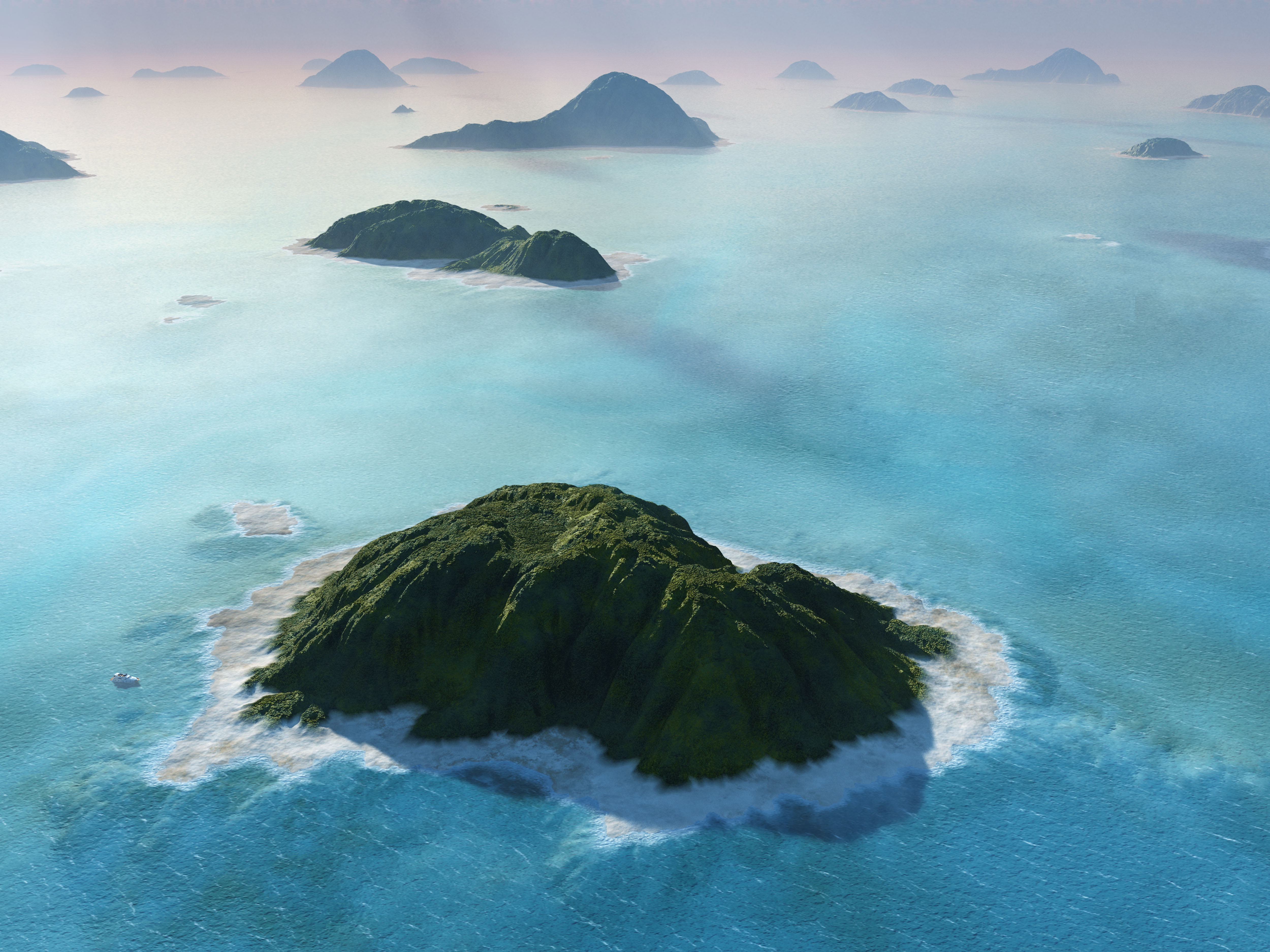The case of the disappearing continent
How can a land mass the size of India just... disappear?


Miquela Ingalls did not set out to solve a 6-million-year-old mystery when she began her studies in geophysical science at The University of Chicago. In fact, the doctoral student had no idea there was a mystery to be solved. She was busy with her dissertation work when she and her colleagues discovered something odd. Very odd, in fact. A giant land mass the size of India had simply vanished off the surface of the Earth, without anyone even noticing.
How could this have happened? With her colleagues, Ingalls set out to answer that question. But to figure out where the land had gone, they had to go back — way back — to a time long before humans, or any of our close ancestors, roamed the Earth, back to when there was a huge continental collision.
Hundreds of millions of years ago, India was just an island floating off the coast of Australia. But it was migrating, slowly but surely, northward towards Asia. Then, about 60 million years ago, the island slammed into Tibet, creating one of the most influential continental crust collisions in our planet's history.
The Week
Escape your echo chamber. Get the facts behind the news, plus analysis from multiple perspectives.

Sign up for The Week's Free Newsletters
From our morning news briefing to a weekly Good News Newsletter, get the best of The Week delivered directly to your inbox.
From our morning news briefing to a weekly Good News Newsletter, get the best of The Week delivered directly to your inbox.
The force was enormous. It caused chunks of land to break off, heading in a variety of different directions. Some of them eroded into the ocean, some squeezed out to form Southeast Asia, and some were sent skyward to form what we know of today as the Himalayan mountain range. And the rest of it? Well, scientists had long assumed it to form the Tibetan Plateau.
They were wrong.
Ingalls and her research adviser, David Rowley, were reconstructing the long, storied elevation history of the Tibetan Plateau when they noticed that it had already been partially formed when the collision began. That meant that hundreds of gigatons worth of India and Tibet's continental crust had not ended up in the plateau (for reference, a gigaton is a BILLION metric tons).
With the help of Albert Colman, an assistant professor in the geophysical science department of The University of Chicago, and Brian Currie, a professor from Miami University's geology and environmental earth science department, Rowley and Ingalls went looking for the missing land. They knew the continental crust could not have simply disappeared. But it was clearly not where it was supposed to be. "There definitely was this moment where we were running the calculations and it was like, we have to double check everything because none of us want to believe this," Ingalls says.
A free daily email with the biggest news stories of the day – and the best features from TheWeek.com
The answer they were looking for turned out to be right in front of them the whole time — or more precisely, below them. The team realized, as they outlined in their findings, published last month in the journal Nature Geoscience, that the only plausible explanation was that the impact of the collision had caused the crust to be swallowed up by the Earth. Or, in more scientific terms, it had been subducted beneath the Earth's surface, and reintroduced into the mantle (that layer of the Earth that sits just below its surface).
But that conclusion was hard to swallow. It contradicted one of the key rules in geophysical science: that continental plates are too light to get pulled under the planet's surface. It would be like trying to drown an inflated beach ball, Ingalls says.
And yet, the evidence didn't lie. The team checked and double-checked their calculations and kept coming to the same conclusion. "Not only do our calculations suggest that this is happening, but seismologists have shown what's thought to be continental crust material in some of their studies beneath Tibet and even further down in the mantle," Ingalls explains.
The case of the missing landmasses has been solved, but the answer left the researchers with even more questions than before. If there have been multiple continental crust collisions throughout the planet's 4.5-billion-year history, could more continental crust have been sucked down below the surface? Could half of America somehow be lurking in the crust beneath our feet? Ingalls says the researchers are already looking into these possibilities.
Why did it take so long for scientists to realize the landmasses had disappeared? Ingalls says a lot of the calculations the team used were not actually available until recently. It was also only in the last decade or so that researchers were able to figure out exactly when the collision started and what the crustal thickness was before the impact. "We benefited from 20-plus years of other people's research, providing these constraints that allowed us to make the most rigorous calculations available," she says.
The collision is not over. India is still traveling toward Tibet at this very moment. So in theory, much more of our land could disappear into the Earth in the future. But don't worry, this process happens on geologic time, so by the time it happens, we'll be long gone.
Hallie Golden is a freelance journalist in Salt Lake City. Her articles have been published in such places as The New York Times, The Economist, and The Atlantic. She previously worked as a reporter for The Associated Press.


